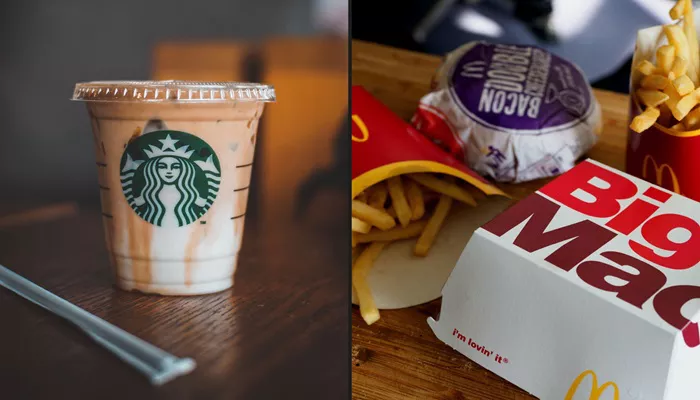On the surface, it seems like Americans are avoiding Big Macs, booze, and even Starbucks.
Earnings reports for major food and beverage companies have just started coming in this week, revealing how American spending habits are changing in a time of strong employment, steady wages, and cooling inflation.
The main takeaway: Americans are still spending money. It’s our thing. If there were an Olympics for spending amid political upheaval, wars, and pandemics, the US would always win gold, silver, and bronze.
But lately, we’re being more selective.
For example, Starbucks reported its second consecutive quarter of poor sales on Tuesday. On Monday, McDonald’s said its US sales fell by 0.7% compared to the same period in 2023. Diageo, the company behind Johnny Walker and other popular liquor brands, experienced its first sales decline since the pandemic, led by a downturn in North America.
It’s not that Americans have given up fast food or alcohol. But after years of rising prices, we’re hunting for deals and splurging on what we truly want.
“Consumers are willing to spend, but they’re not willing to spend on the same old thing,” said RJ Hottovy, head of analytical research at Placer.ai. They are “definitely being more selective with their food purchases.”
This trend is especially evident among chain restaurants, as Jonathan Maze, editor-in-chief at Restaurant Business Magazine, pointed out on X.
Sales at Chipotle locations open for at least a year? Up 11% from a year ago.
Texas Roadhouse? Up 9.3%.
McDonald’s? Down 0.7%.
Starbucks? Down 2%.
People are essentially saying, “If I’m going to overpay for food, I might as well get some service.”
This shift isn’t entirely new. For years, the price gap between different types of restaurant chains — from cheaper “quick service restaurants” (like McDonald’s) to “fast casual” (like Chipotle, Sweetgreen) and “casual dining” (like Applebee’s) — has been closing.
McDonald’s, once known for being reliably cheap, has raised its prices, while sit-down restaurants have emphasized value and convenience.
Applebee’s, for example, directly targeted frustrated McDonald’s customers who felt the chain had overstepped with its pricing. This spring, the CEO of Applebee’s parent company Dine Brands told CNN, “You can get our burger for $9.99 … why would you take a $10 burger … that you eat out of a bag in your car?”
Chili’s made its pitch even clearer, adding a burger with “twice the beef of a Big Mac” to its “3 for me” value menu.
Now, McDonald’s is trying to win back less affluent customers while also appealing to wealthier ones looking for something new. They’re doubling down on their $5 value meal promotion and introducing a higher-end “Big Arch” burger.
Broadening the perspective beyond food, all of this aligns with the post-pandemic trend of shoppers treating themselves to little luxuries and Instagram-worthy experiences. Are we getting takeout every night? No. Are we making coffee at home or opting for a cheaper bodega brew? Yes. But are we also spending thousands to see Taylor Swift in Paris? Definitely.
It’s a truth so well-known it’s almost a cliché: Don’t bet against the American consumer. Spending money is what we do. It’s who we are. And it’s why the US economy posted a stronger-than-expected 2.8% annual growth rate in the second quarter.


